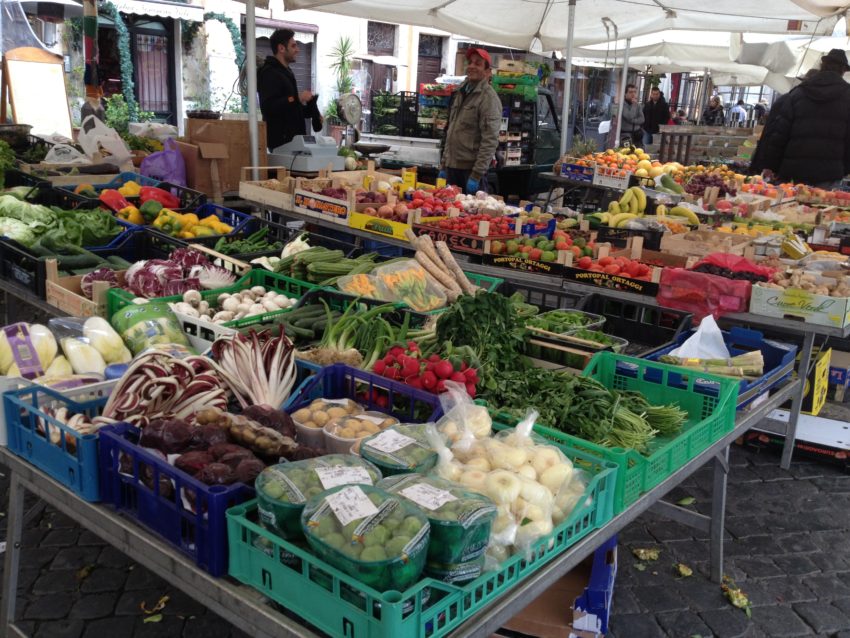Retired in Rome Journal: Shopping and cooking in Rome a gastronomic Disneyland

I guess I’m officially part of the neighborhood now. I was shopping in Campo dei Fiori yesterday and a tourist took a picture of me buying fruit.
My “MAN BITES DOG!” moment happened during my first foray into grocery shopping in Rome. This is not a chore, even for men. It’s the perfect slice inside Roman culture. The only way to learn about a people is to become one of them. There’s no better way than rub elbows at the fruit stand and the cheese shop and the bakery.
Shopping in Campo dei Fiori, though, is just plain weird. It’s like a food court inside a circus. Campo dei Fiori is Rome’s pub central. It’s surrounded by rollicking beer bars frequented by tourists, backpackers, beggars, cads and scoundrels. When I’m racked with remnants of jet lag that leave me wide awake at 3 a.m., I can sometimes hear their screams. When I see the orange-clad maintenance crews washing off the cobblestones with their high-powered hoses, I don’t know if they’re washing away spilled garlic or vomit.
I became addicted to public markets during my first stint in Rome from 2001-03. Mercato Trionfale was a sprawling open-air food bazaar not far from the Vatican. I got to know the Cheese Boys. I fell in lust with the Olive Goddess. I chatted up the Pasta Princess. It’s a great way to shop. You go to one stand for your cheese, another for your sausage, another for your bread. Then you stop at a tiny alimentari and get a bottle of decent Chianti for 2.50 euros.
Campo dei Fiori isn’t that extensive. It’s 80 percent fruit and cheese which, if you think about it, is a pretty what you can live on here. The clerks are real weathered. They seem like they once sold parmigiana to Caesar or, at least, radishes to Mussolini. (Did you know Mussolini ate all his fruit cold? I tried it when I read that and have been eating fruit that way ever since.) But they’re friendly enough and more than willing to help an American speaking passable Italian. Only one person spoke English which means every daily foray will be a nice mini-lesson.
My shopping didn’t take long. I bought a half dozen fat clementines, a stalk of hard, ripe fire-engine red tomatoes and some homemade fettuccine made that morning. In the corner of the piazza was a little cheese and meat store where a burly man in black, horn-rimmed glasses sold me two links of fat sausage, a brick of peccorino romana and a ball of mozzarella. All that and a liter of milk was all of 18 euros (about $24), not much more than what I paid 11 years ago. OK, I can live here.
My kitchen won’t appear on the Food Network. It consists of two tiny burners, neither of which are separated by enough shelf space to comfortably hold two skillets at the same time. While my sausage and tomato sauce simmered, I waited for 30 minutes for the water to boil in a pot leaning precariously off the burner. I moved the sauce and put the water right on top and even that didn’t work. Now how can an Italian kitchen have a stove that can’t boil water? That’s like an Eskimo who can’t get ice. Running out of patience and starting to pick all the sausage out of the sauce from hunger, I threw the fettuccine in the water. I then said a short prayer to St. Parma, Italy’s patron saint of gastronomy. Incredibly, the pasta softened in 60 seconds and tasted lovely. I mixed with the sauce, rained grated parmigiana on it and put the whole work on a dish. While watching a horrific Italian comedy, I melted in sheer bliss as I dug into the luscious sausage and biting parmigiana. The tomatoes were as sweet as apples.
In Rome, even I am a great cook.

